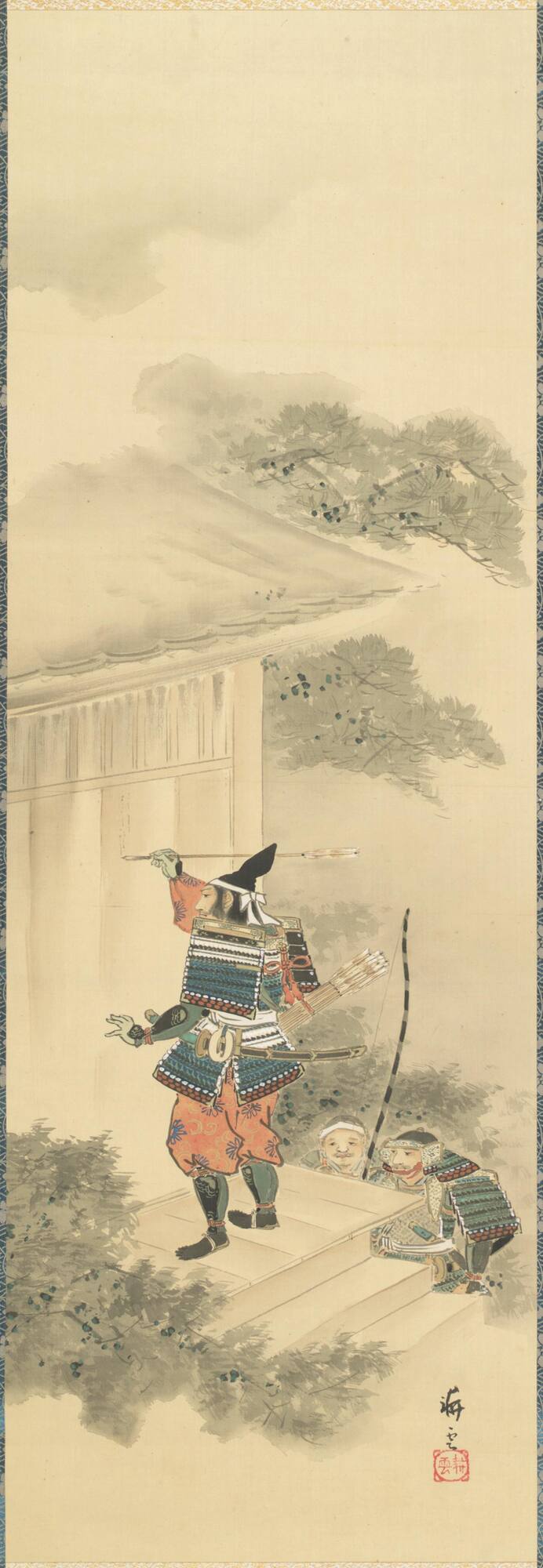Yamada Koun
(Japanese, 1878–1956)
The warrior Masatsura uses an arrow to inscribe a poem

Object Details
Artist
Yamada Koun
Date
1917
Medium
Hanging scroll: ink and colors on silk
Dimensions
13 5/8 x 40 1/4 inches (34.6 x 102.2 cm)
Credit Line
Gift of Mrs. Thomas J. Forbes, Class of 1937
Object
Number
89.040.001
Masatsura was a fourteenth century warrior whose father Kusunoki no Masashige was killed while defen(…)
Masatsura was a fourteenth century warrior whose father Kusunoki no Masashige was killed while defending the legitimate emperor Go Daigo. After the emperor’s death, his son Go Murakami ascended to the throne, and Masatsura, then fourteen years old, joined the struggle to support his legitimacy. Masatsura’s successes in defending the emperor against his enemies earned the favor of Go Murakami, but angered his foe Takauji, who sent 60,000 troops to crush Masatsura’s 3000 warriors. Before the battle, Masatsura and a group of his men visited the tomb of Go Daigo and there swore to fight to the death, carving their names on the tomb. Using the point of an arrow Masatsura inscribed a poem on the temple wall indicating that in case he did not return, his name would be recorded among others killed in defense of the emperor. During the battle Masatsura and his men were overwhelmed, he was fatally wounded, and he committed seppuku along with his brother and cousin. Afterwards, the victors burned Go Murakami’s palace, but the emperor managed to escape.












